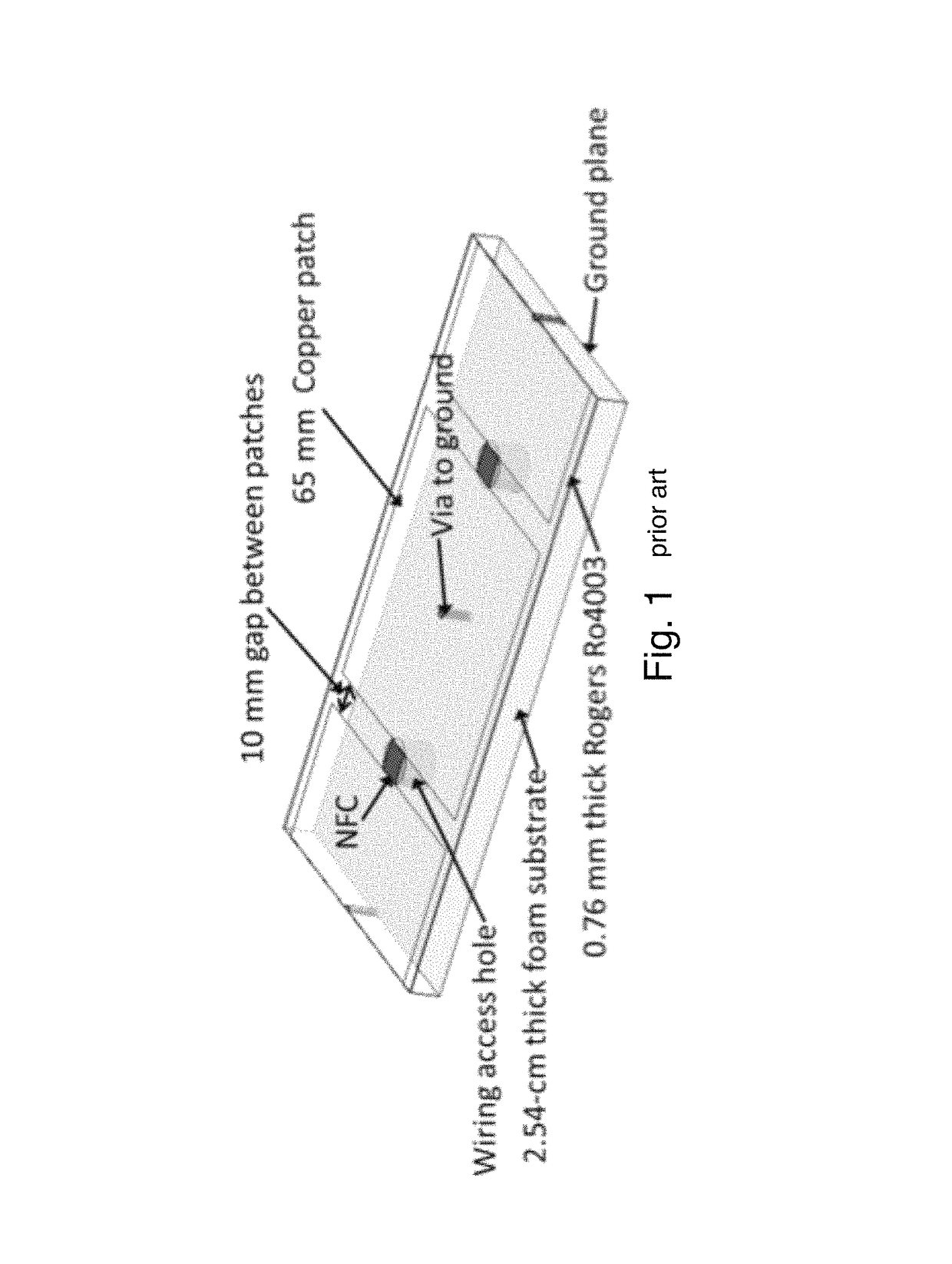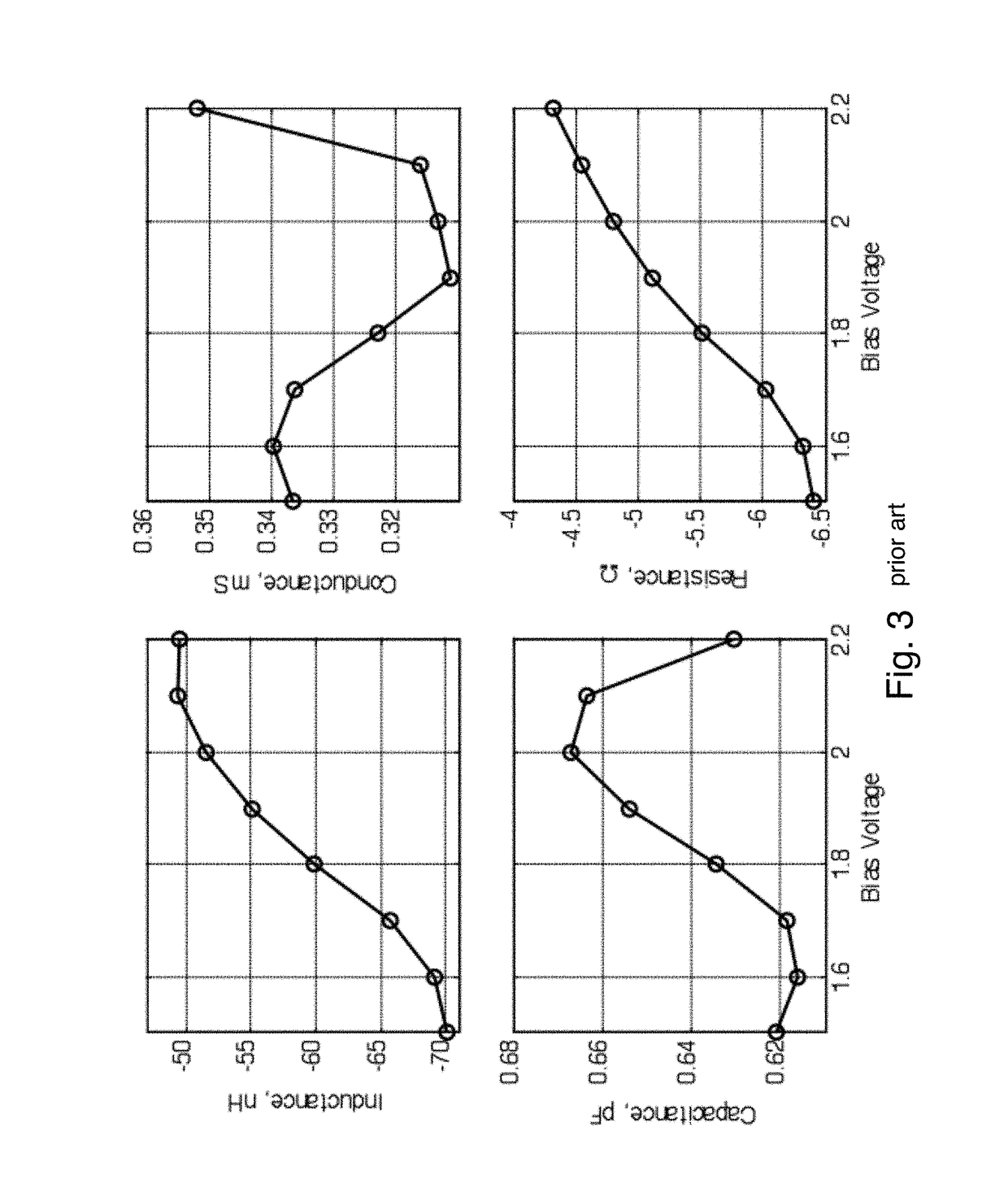Linearly polarized active artificial magnetic conductor
a magnetic conductor and linear polarization technology, applied in the direction of antennas, electrical equipment, etc., can solve the problems of excessive thickness and/or permeability, short circuit of antennas, and limited bandwidth of amcs, etc., to achieve reasonable amc bandwidth, and achieve the effect of reducing the thickness and/or permeability of amcs, and reducing the size of amcs
- Summary
- Abstract
- Description
- Claims
- Application Information
AI Technical Summary
Benefits of technology
Problems solved by technology
Method used
Image
Examples
Embodiment Construction
[0025]This invention comprises an AAMC having a plurality of unit cells 19, each unit cell 19 comprising a metallic patch 22 disposed spaced from a ground plane 24 by a substrate 28. See FIGS. 4a1 and 4a2. The metallic patch 22 of the cells 19 are connected to a metallic patch 22 of a neighboring cell 19 with non-Foster negative inductors 30 in one direction. The AAMC further has RF isolation plates 20 disposed or arranged within the substrate 28. These isolation plates 20 stabilize the AAMC by reducing the E-plane coupling between the negative inductors.
[0026]But before discussing the use of such isolation plates 20 to stabilize the AAMC it might be useful to first discuss the theoretical underpinnings of AMCs and AAMCs in general and how NFCs 30 may be implemented.
AMCs and AAMCs
[0027]An AMC is characterized by its resonant frequency, ω0, which is where an incident wave is reflected with 0° phase shift, and by its ±90° bandwidth, which is defined as the frequency range where the re...
PUM
 Login to View More
Login to View More Abstract
Description
Claims
Application Information
 Login to View More
Login to View More - R&D
- Intellectual Property
- Life Sciences
- Materials
- Tech Scout
- Unparalleled Data Quality
- Higher Quality Content
- 60% Fewer Hallucinations
Browse by: Latest US Patents, China's latest patents, Technical Efficacy Thesaurus, Application Domain, Technology Topic, Popular Technical Reports.
© 2025 PatSnap. All rights reserved.Legal|Privacy policy|Modern Slavery Act Transparency Statement|Sitemap|About US| Contact US: help@patsnap.com



